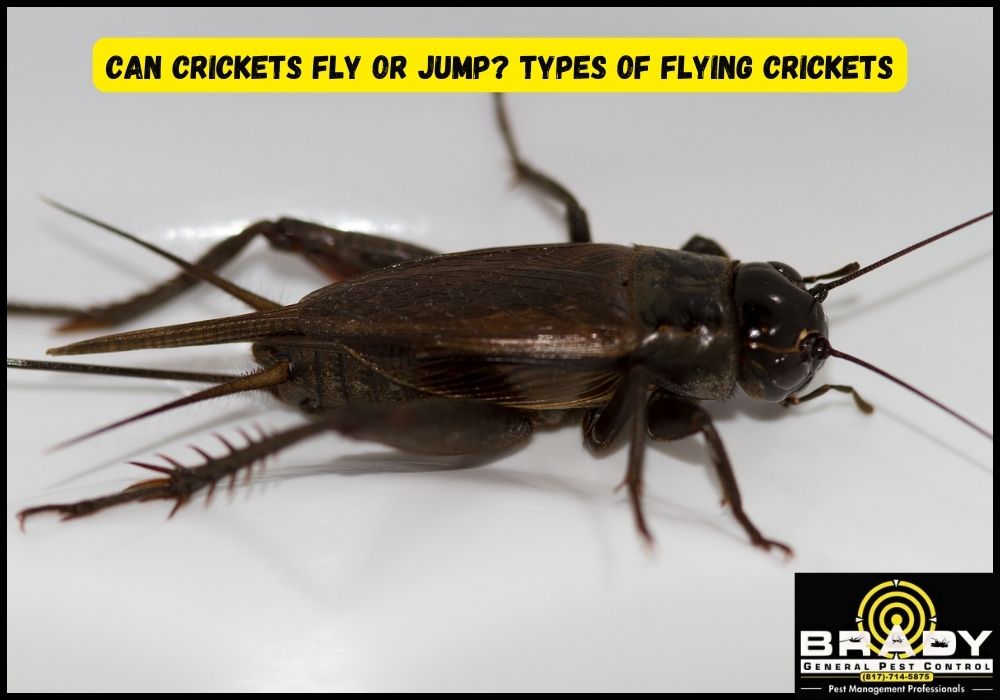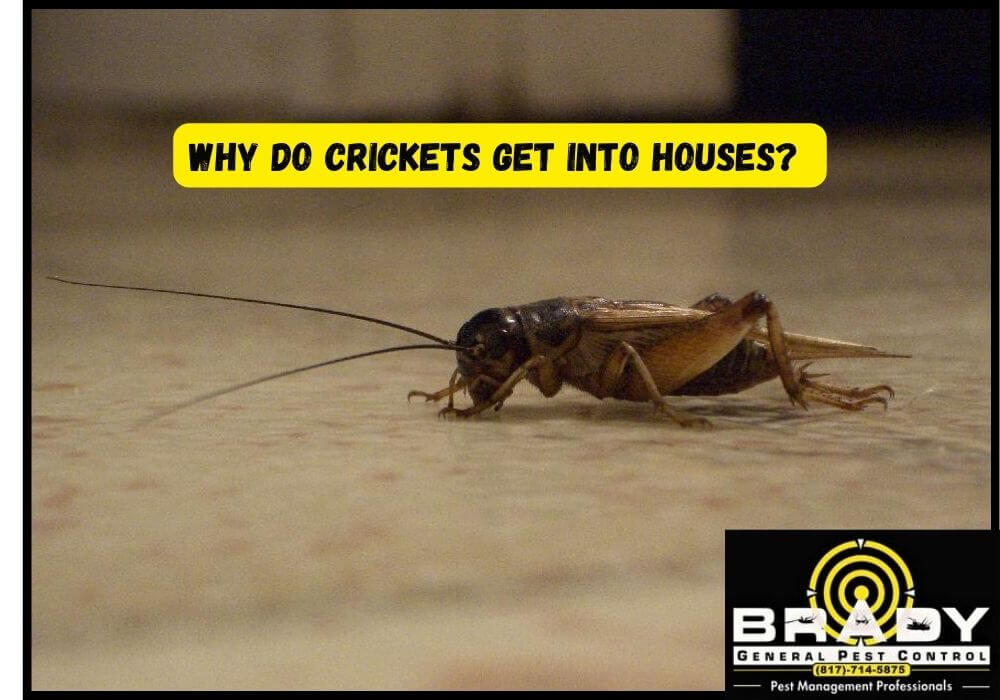One of the common questions about crickets is: Can crickets fly? The answer depends on the species of the crickets. Some are known to fly while some cannot fly at all.
Flying crickets or jumping crickets, we know how to have them eradicated from the face of the earth at Brady Pest Control here in Grand Prairie, TX. Read more about whether can crickets fly and how we can assist you in eradicating them.
Types of Crickets?

Here are the common types of crickets you might encounter:
- House Crickets: These are fully winged and can’t fly very well due to short distances and fatigue. They hover across sources of light during the night.
- Field Crickets: Like house crickets, they are winged but are known to hop rather than fly.
- Camel Crickets: These crickets are wingless. They use their enormous hind legs to jump.
- Jerusalem Crickets: These crickets also don’t fly because they lack wings. They are very good at climbing and jumping.
Do Crickets Jump?
Yes, cricket is famous for its jumping. Some prefer to jump rather than to fly. Here’s what you need to know:
- Powerful Hind Legs: House cricket has strong, broad hind legs used in leaping over great distances.
- Escape Mechanism: Jumping allows crickets to escape from their predators more effectively.
- Indoor Jumping: This usually happens when the crickets enter your home. They are jump hoppers that leap through floors and walls.
How Crickets Use Their Wings
- Chirping Sounds: Males have wings, which they utilize to produce sounds known as chipping by fanning them. This behavior is known as stridulation and it is how males secure females and even convey simple messages to other crickets.
- Attracted to Light: House crickets, commonly known as flying crickets, are nocturnal and tend to fly towards any light. It makes them sneak into homes through windows or doors left open by households that are out of the compound.
Read More
- How to Get Rid of Crickets in the House Naturally, Texas
- Crickets In Grand Prairie, Texas FAQs
- How to Get Rid of Tiny Ants in House?
Why do Crickets get into Houses?

Crickets tend to invade homes for several reasons, including:
- Warmth: Remembering that crickets are cold-blooded insects, they look for warmer places in a house, especially when it’s cold.
- Moisture: Crickets are attracted to damp areas. They require moisture; therefore, they are usually found in basements, bathrooms, and kitchens.
- Food Sources: Crickets feed on fabrics, plants, and other organic matter. It makes your home favorable to them.
Getting rid of Crickets
- Seal Entry Points: We will assist you in treating the entry points through which crickets may access your house such as cracks and gaps.
- Remove Moisture: Contact us for advice on the techniques we use to minimize humidity and make your home unsuitable for crickets.
- Targeted Treatments: Our team of experts will then use the correct methods to eliminate crickets, as we shall be focusing only on eradicating them.
Final Words!
Do not allow crickets to invade your home and become a nuisance. Whether it is flying crickets or jumping crickets, we have dealt with them before. We know how to solve the issue. Contact us today at (817) 714-5875 or fill out our online form to schedule your consultation.
Can Crickets Fly Frequently Asked Questions
How high can crickets jump?
Cricket is capable of jumping as high as 3 feet in the air.
Can common crickets fly?
House crickets are fullwinged and can fly, even though they are much more likely to jump.
Can crickets bite you?
Yes, they can bite.
What to do if a cricket is in your room?
If the problem is not resolved, you can capture them and transfer them outdoors or hire a pest control company.
How long will a cricket live in my house?
Crickets can dwell in a house for about 8 to 10 weeks.
What attracts crickets in the house?
Crickets are most active in warm and humid conditions and prefer well lit areas.
Should I be worried if I find a cricket in my house?
Crickets do not represent a big menace to your family or home. They are harmless.
How do you make crickets stop chirping?
If they are interested in light and moisture, minimize their exposure or throw away the item if not removed from the home.
What month do crickets come out?
Cricket activity is most likely to occur during late summer to early fall.

